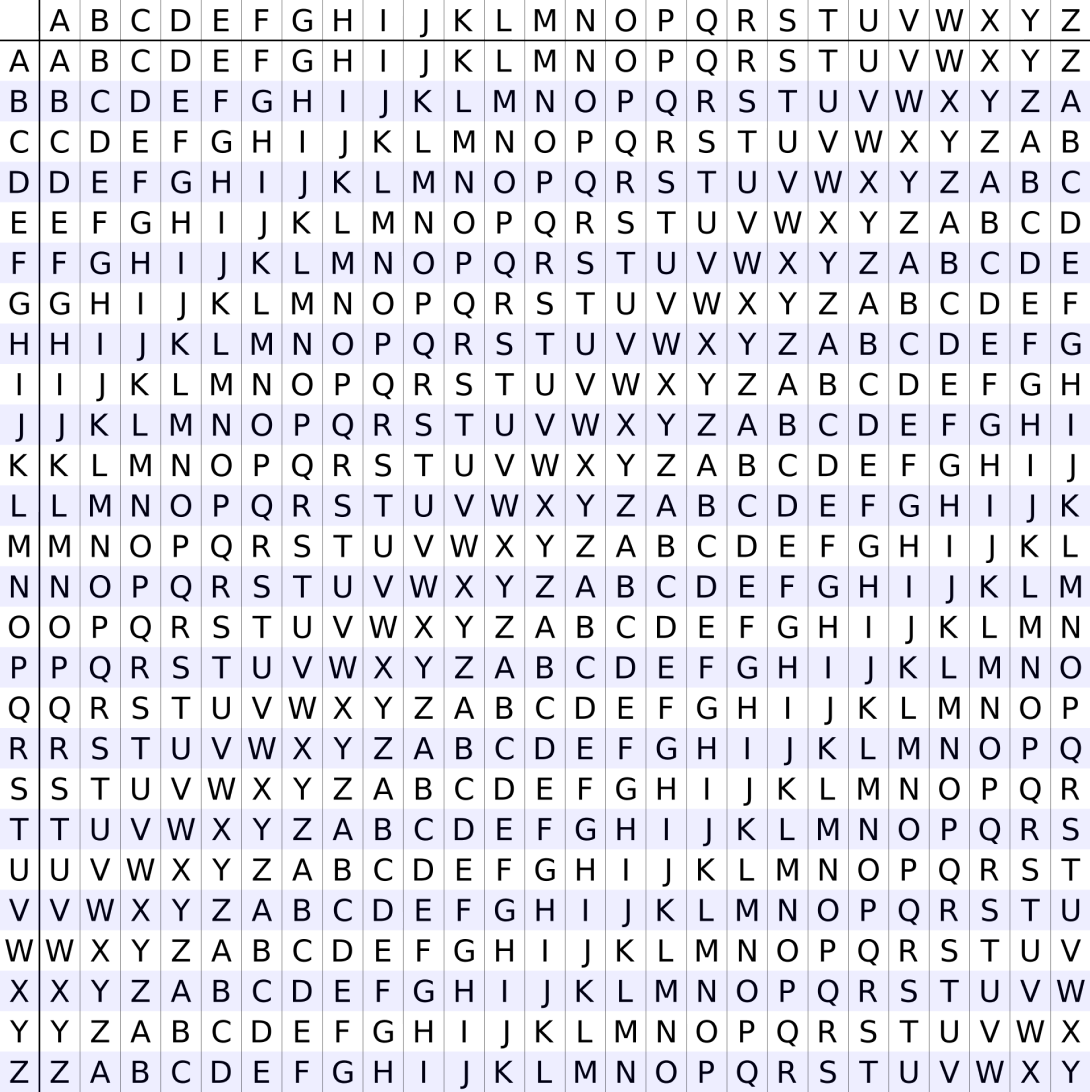

Vigenère Cipher
A complex French polyalphabetic substitution cipher roots.
What is the Vigenère cipher?
The Vigenère cipher is a polyalphabetic substitution cipher. It is a method of encrypting alphabetic text by using a series of different Caesar ciphers based on a keyword.
Plain Text
Decrypt
Key
Cipher Text
How does the Vigenère cipher work?
To use the Vigenère cipher, you first choose a keyword. We then repeat the keyword over and over again until it matches the length of the message we want to encrypt. Next, we use each letter of the keyword to shift the letters of the message according to a Caesar cipher.
The first letter of the keyword is used to shift the first letter of the message, the second letter of the keyword is used to shift the second letter of the message, and so on. To perform the encryption, we use modular arithmetic to add the numerical value of each letter in the message to the numerical value of the corresponding letter in the keyword.
We continue this process for each letter of the message, using the corresponding letter of the keyword to create a new Caesar cipher for each letter. Once we have encrypted the entire message, we have created a polyalphabetic cipher that is much more secure than a simple Caesar cipher, because it is much more difficult to crack using frequency analysis.
To decrypt the message, we simply reverse the process. We use the same keyword to create a series of Caesar ciphers, and we subtract the numerical value of each letter in the keyword from the numerical value of the corresponding letter in the encrypted message, using modular arithmetic. This gives us the original plaintext message.

Visualizing the Vigenère cipher
| Text | H | E | L | L | O |
|---|
1. Add the text to the table.
| Text | H | E | L | L | O |
|---|---|---|---|---|---|
| Key | K | E | Y |
2. Add the key underneath.
| Text | H | E | L | L | O |
|---|---|---|---|---|---|
| Cipher | K | E | Y | K | E |
3. Repeat the key for the length of the tex
| Text | H | E | L | L | O |
|---|---|---|---|---|---|
| Key | K | E | Y | K | E |
| Cipher | R |
4. Ei = (Pi + Ki) mod 26 for the first letter.
| Text | H | E | L | L | O |
|---|---|---|---|---|---|
| Key | K | E | Y | K | E |
| Cipher | R | I | J | V | S |
5. Repeat until the end of the text.
| Text | H | E | L | L | O |
|---|---|---|---|---|---|
| Cipher | R | I | J | V | S |
| Key | K | E | Y | K | E |
6. You can decrypt the cipher by reversing the process. Di = (Ei – Ki) mod 26
History
The Vigenère cipher was invented in the mid-16th century by Blaise de Vigenère, a French diplomat and cryptographer. Vigenère was a contemporary of other famous cryptographers such as Johannes Trithemius and Giovan Battista Bellaso, and he was known for his expertise in cryptography and code-breaking.
The Vigenère cipher is a development of earlier polyalphabetic ciphers, such as the Alberti cipher, which used multiple cipher alphabets. The Vigenère cipher improved on these earlier ciphers by using a repeating keyword to create a different cipher alphabet for each letter of the plaintext.
Vigenère first described his cipher in his book "Traicté des Chiffres" (Treatise on Ciphers) in 1586. However, the cipher was not widely used until the 19th century, when it became popular among military and diplomatic organizations. It was used by the Confederacy during the American Civil War, and by the Union during World War I.
The Vigenère cipher remained in use for several centuries, until the development of modern cryptographic methods such as the Enigma machine and the development of computer-based encryption systems. However, it remains an important historical cipher, and it is still studied today as an example of a polyalphabetic substitution cipher.
